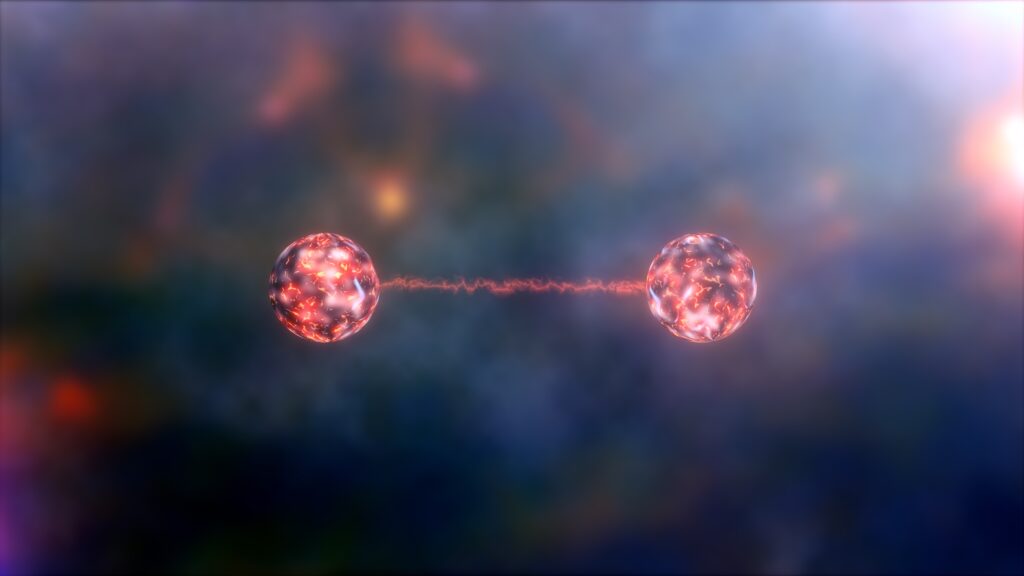Situating Analytic Idealism within Nietzsche’s critique of realism: A world-historical view
Reading | Philosophy
![]() Prof. Richard Grego, PhD | 2022-08-14
Prof. Richard Grego, PhD | 2022-08-14

Modern analytic idealism may offer a path to resolving the historical tension between realism (the notion that we can know something about the world out there, as it is in itself) and a Nietzschean relativism that confines all knowledge to merely personal subjectivity, writes Prof. Grego.
Friedrich Nietzsche’s work is so influential that almost every subsequent school of thought across disciplines (from philosophy to the social-behavioral sciences to literature, critical theory and the fine arts) has acknowledged at least some connection to—if not an affinity with—his philosophical legacy. Central to this legacy is a hierarchical conceptualization of knowledge and reality that also reveals an important distinction between philosophical “realism” (the view that there exists an objectively real world or true facts separate from our subjective perspectives on them) and “anti-realism” (the view that we cannot transcend our subjective perspective on reality and hence can never know reality or truth objectively or in itself); a distinction that has been crucial to theories of mind and metaphysics throughout the world’s intellectual history. Placing comparative idealist and materialist ontologies within the framework of Nietzsche’s hierarchy of knowledge and the realist and anti-realist dichotomy, can highlight essential characteristics crucial to understanding their respective positions in this connection. Further, situating Kastrup’s analytic idealism within this Nietzschean framework reveals important aspects of its ontology in novel ways.
In an early essay On Truth and Lie in an Extra Moral Sense [1], and elsewhere, Nietzsche describes an ontological-epistemic hierarchy whereby our knowledge of reality becomes increasingly distant and dissociated from the authentic experience of reality from which it emerged, leaving our knowledge of, and connection to, reality vague at best and deluded at worst: Reality in itself, insofar as it can be described at all, is an incomprehensibly creative chaos—a well-spring of infinite possibilities, perspectives and events occurring in multifarious ways. Since we are unable to directly comprehend this chaos, we develop “metaphors” and then “concepts” constructed from metaphors, through which to understand it.
This is both natural and inevitable, Nietzsche claims, since reality at its most fundamental level—or what (co-opting Schopenhauer’s term) he called the “Will” or “Will-to-power”, and what Nietzsche’s contemporary, William James, in Principles of Psychology [2], described as the “great blooming buzzing confusion” of pure unmediated experience, the unbounded spectrum of unfolding potentials in our world—is too overwhelming for a limited, local human mind to rationally assimilate and still remain sane, or even survive. Our minds must—through sense perception, mental associations, symbols and language—turn this relentless flood of raw pre-cognitive events, from a world of limitless and perpetually evolving possibilities, into more limited, orderly and abstract actualities. For our survival, we transform the chaos of pure reality into a mentally digestible conceptual order. We do this by turning our sense data from pure experience into “metaphors” or symbols that attempt to describe this data (albeit with very limited success) in terms of abstract ideas, and then we refine our symbolic metaphors into what we take to be more accurate depictions of sense data: “concepts.” Eventually we become so accustomed to seeing reality through the lens of our metaphors and concepts that we think the metaphors and concepts literally are reality. Kastrup’s illustration of “our perceptions as a cosmic dashboard providing salient, but indirect, information about the mental universe out there” [3], which then becomes illusory when we take this information to literally be the universe out there, speaks precisely to Nietzsche’s point. Since our limited (dissociated) minds are unable to directly experience the ultimate depth and richness of reality (fundamental consciousness), which is their source, they experience it in terms of sense data and the conceptual constructs derived from this sense data.
NIETZSCHE’S ONTOLOGY
The Will (chaotic flux of all existence) generating:
> Metaphors (via sense impressions derived from the Will)
> Concepts (abstract ideas derived from sense impressions)
Interestingly, there is an important sense in which ‘materialist’ (sometimes referred to as ‘physicalist’) ontologies—the view that all reality reduces exclusively to material entities or forces that can be described by the physical sciences—share Kastrup’s and Nietzsche’s perspective. Materialist theories of consciousness in philosophy, neuroscience and psychology view the limitations of our knowledge via a kind of inverse hierarchy, whereby the interaction of the physical world with the neuro-chemical structure and activity of our brains gives rise to sense perceptions, which then give rise to ideas: concepts derived from these sense perceptions. Unlike Kastrup, however, this materialist theory holds that the material-physical world from which this mental hierarchy arises is the sole fundamental ontological reality, and that phenomena become increasingly illusionary as they progress from physical interactions to conscious experience [4]. Keith Frankish, a well-known advocate of a version of materialism called ‘illusionism,’ writes:
Illusionists agree with other physicalists that our sense of having a rich phenomenal consciousness is due to introspective mechanisms. But they add that these mechanisms misrepresent their targets. Think of watching a movie. What your eyes are actually witnessing is a series of still images rapidly succeeding each other. But your visual system represents these images as a single fluid moving image. The motion is an illusion. Similarly, illusionists argue, your introspective system misrepresents complex patterns of brain activity as simple phenomenal properties. The phenomenality is an illusion. [5]
MATERIALIST—ILLUSIONIST ONTOLOGY
Physical world / laws of physics generating:
> Brain neurochemistry caused by the physical world / laws
> Sense impressions (qualia), conscious thoughts, etc. caused by brain neurochemistry
Much closer to Kastrup than materialists like Frankish—whose work Kastrup has refuted himself—there is a rich heritage of ‘idealism’ (the view that all reality is ultimately mental, or the activity of consciousness) in many of the world’s intellectual traditions, which have also posed similarly structured hierarchies of knowledge, albeit in ways that turn the materialist hierarchy on its head. Plato viewed both sense-perceptions and the conceptual constructs derived from them as illusory, in much the same way as the materialists. However, inverting the materialist hierarchy, Plato’s idealist ontology places a kind of cosmic consciousness (called “the Good”) at the creative pinnacle of all existence: It generates the less real, abstract, quasi-spiritual, quasi-mathematical “Forms” or ideas which, in turn, generate even less real individual minds, thoughts, bodily sensations and—least real of all—what we perceive as the physical world [6]. Traditional Buddhist cosmology describes a very similar regressive hierarchy of reality and knowledge leading from an all-encompassing universal consciousness (“arupadhatu” or formless potentiality), which engenders a realm of cosmic order and Jungian-type archetypal spirits (“rupadhatu”), which in turn generates the world of individual minds, sense-perceptions and physical objects-forces (“kamadhatu”) [7]. Even physicist David Bohm’s quantum theory involving a “super-implicate order” (the dynamic realm of all potentialities for the physical world), generating the “Implicate order” (the structure of this potentiality’s unfolding in spacetime), which then generates the “explicate order” of the physical universe, is arguably an expression of, or analogous to, the idealist legacy that largely inspired it [8].
| PLATO | BUDDHISM | BOHM’S PHYSICS |
| The Good generating: | Arupadhatu generating: | Super-Implicate Order generating: |
| > the Forms | > Rupadhatu | > Implicate order |
| > the sensory-material world | > Kamadhatu | > Explicate order |
Thus, both the idealist and the materialist views of knowledge are hierarchical (in that they pose an ontological-epistemic order from less to more real, and eventually to the absolutely real) and realist (because there is one absolutely true reality to which these hierarchies correspond). It just goes in opposite directions for each tradition: the Platonists think that the more you move in an immaterial-mental-transcendent direction, and away from the material-nonmental, the more real you get; the more you approach reality and ultimate truth. The materialists think that the more you move in a material and sensual direction, away from the non-material and mental, the closer you are to reality or ultimate truth. However, while idealism and materialism disagree with one another on this most basic ontological ground, they also, from Nietzsche’s vantage-point, share one important similarity that makes both an anathema to his own philosophy: their common commitment to philosophical realism.
Nietzsche agrees with both idealist and materialist frameworks to the extent that (as explained above), like them, he sees a hierarchical scale of self-delusion involved in our attempts to attain true knowledge of absolute reality. However, their delusion is that any true knowledge of absolute reality can be attained at all. Since they base their hierarchies on idealized conceptions of ultimate absolute truth (whether mental or material), both these traditions are mistaken. All human attempts to attain absolute truth through conceptual constructs—whether in religion, philosophy or science—are equally misguided, since they believe they can arrive at some complete Grand Idea or Ultimate Concept of reality through abstract reasoning and mentally contrived ideas. Plato and his legacy, Nietzsche claims, place an idealized absolute reality at the pinnacle of a grandiose ontological-epistemic hierarchy as the ultimate Form of all forms: an eternal, unchanging, absolute cosmic Mind from which the lesser reality of an ever-evolving material world emanates. Then Post-Enlightenment materialists simply turned the Platonic hierarchy around without fundamentally changing it, by locating this absolute Truth at the physical ground of a scientific cosmic order from which (somehow, mysteriously and inexplicably) the illusion of mental activity springs. Nietzsche agrees with the materialists that the Platonic quest to capture reality via abstract concepts is an exercise in self-deception, because it mistakes concepts of reality for reality itself; a reality that, Nietzsche insists, our concepts can never be trusted to do justice to. But Nietzsche also thinks that the materialist are doing the same thing—perhaps even worse—because they also assume there is a fundamental material reality (the world defined by the physical sciences) ontologically prior to, and more real than, the concepts we have about it, unwittingly ignoring the fact that the “physical world” is itself is merely another concept about reality!
Ever the arch anti-realist, Nietzsche rejects both idealist and materialist worldviews for their respective forms of realism: for supposing that some final, God’s-eye-view definition of Truth and reality transcends all biased and illusory views. It’s not that there is no ultimate reality; it’s just that this reality eludes our epistemic purview as soon as we even begin to conceive of it. The infinite depth and variety of reality inspires and gives rise to our metaphors and concepts, but it is too profoundly wondrous (and terrible) to be reduced to, or captured by, these metaphors/concepts. As soon as we transform the richness of pure experience into a concept, it ceases to be what it genuinely is, by being abstracted into our intellectualized conception of it. Like the flowing water of a stream caught in a bucket, living experience loses its vitality when it is reduced to abstract concepts. To return to Nietzsche’s hierarchical schema: the anarchic “Will” isn’t non-existence; just the opposite. The incomprehensible and ineffable Will is existence in its most authentic form, but only authentic insofar as—like Lao Tzu’s “Tao” that, when named, ceases to be the Tao [9]—it remains unspoken, unthought and beyond the limitations of reifying metaphors or concepts. Nietzsche’s Will, like the varieties of existentialist “freedom” and “nothingness” that it inspired, is Reality and Truth that can only perhaps be realized in some absolute sense by being it—dynamically and spontaneously—rather than just thinking about it.
There are also anti-realist ontological-epistemic hierarchies similar to Nietzsche’s: for instance, Nagarjuna’s Madyamika Buddhist ontology [10] describes the illusory world of sense perception (“samsara”) as less real than the realm of enlightened consciousness (“Nirvana”), but only insofar as Nirvana is simply the realization that the samsaric world it encompasses is not real in an absolute sense. Both samsara and Nirvana are rendered unreal, in turn, by reality’s ultimate incomprehensibility (“emptiness”), since even Nirvana’s disclosures about reality are void of ultimate reality insofar as they involve concepts of, or statements about, reality. The Bohr-Heisenberg interpretation of reality via quantum physics is analogous to Madyamika’s anti-realist subversion of hierarchies: the indiscernible domain of “nature” under investigation in quantum physics gives rise to derivative theories about nature and its forces, which in turn generate even more abstract boundary conditions for deriving these theories, the reality of which is paradoxically undermined by their grounding in the mysterious phenomenon they are attempting to understand in the first place! As Heisenberg explained in his famous Physics and Philosophy:
We cannot disregard the fact that natural science was formed by men. Natural science does not simply describe and explain nature … it describes nature as exposed to our method of questioning … This is true even of the simplest and most general concepts like space and time. Therefore it will never be possible by pure reason to arrive at some absolute truth. [11]
One essential characteristic all these anti-realist theories share is that they remain ontologically neutral in an important sense. Neither Nietzche’s “Will” nor Nargarjuna’s “emptiness” nor Bohr-Heisenberg’s “nature” have any definable “substance” in any conventional sense of this term. Like “Brahman” in Advaita Vedanta or the “God” of apophatic theology and Sufi mysticism, they remain the ubiquitous source of all existence but cannot be identified as existents themselves.
| NAGARJUNA-Madyamika | BOHR-HEISENBERG |
| EMPTINESS encompassing: | NATURE encompassing: |
| ** Samsara >< Nirvana ** | ** Modules-theories >< Boundary conditions ** |
| (co-creating each other within emptiness) | (co-creating each other within unbounded nature) |
And it is here that Kastrup’s analytic idealism might be usefully situated within this realist/anti-realist framework. In fact, if analytic idealism is anti-realist in this way, it would not only differentiate his philosophy from those of 19th-century thinkers like Berkley, the German Idealists, American Transcendentalists and later British idealists [12], or even contemporary idealists and cosmopsychists, whose respective versions of idealism arguably trend toward the kind of realism that Nietzsche critiques, but, more importantly, it would make Kastrup’s ontology less vulnerable to this critique itself. Like most analytic philosophers, Kastrup has a predilection for logical clarification, precise definitions and classification, which can give his arguments the kind of abstractly conceptual or “realistic” sounding tenor that Nietzsche was averse to. He has often referred to himself as a “scientific realist,” for instance, when declaring his epistemic commitment to scientific integrity [13]. This might sound contrary not only to anti-realism but also to his own idealist principles. Moreover, along these same lines, he has actually speculated about what the metaphysical nature of universal consciousness (or Will) might be—in stating that it is most likely impersonal—which would seem, in a realist vein, to attribute definitive properties to universal consciousness.
However, a more important consideration here is what Kastrup means by terms like “realism,” and what his thinking along these lines amounts to. As far as scientific realism is concerned, Kastrup has clarified his position clearly, stating that:
my position is that both space and time are qualities of experience … spacetime is not an ontological primitive; it isn’t some kind of scaffolding independent of consciousness. It is only an amalgamation of qualities—amenable to mathematical modeling—that themselves only exist in consciousness. I thus stand by my core claim that consciousness is the sole ontological primitive. [14]
Kastrup’s brand of scientism realism appears, therefore, to be of a Kantian variety (referring here to the philosopher Emanuel Kant): The scientific-empirical reality we can make objective claims about (defined by Kant as “phenomenal” knowledge) is delimited paradoxically by the subjective parameters of our sense data and interpretive concepts (defined by Kant as “categories” of understanding). However, the objective reality we are attempting to describe, or ultimate reality in itself (what Kant calls the “noumenal”), remains beyond the ability of our limited phenomenal knowledge to comprehend [15]. In this, way scientific knowledge is reliably discernible, stable and objectively real insofar as it captures a genuine aspect of truth: what reality looks like when viewed through the scientific lens. However, insofar as this knowledge is only an abstract and truncated model of reality, rather than a complete rendering of reality in itself (physicist Steven Hawking’s theory of “model dependent realism” in The Grand Design comes to mind in this connection [16]), it cannot be a “real” representation of the Truth in any absolute sense. Kastrup’s scientific realism, therefore, qualifies as both a realist and an anti-realist position, depending upon how it is understood.
| KASTRUP | |
| Universal Consciousness generating: | Universal Consciousness encompassing: |
| > Individual identity, sense impressions, ideas | ** Self-identity >< external world ** |
| > the concept of an external physical world | |
While his definitive assertions about the impersonal nature of universal consciousness are more difficult to reconcile with an anti-realist ontology—which places apprehension of universal consciousness in itself beyond the purview of conceptual categories and constructs—Kastrup qualifies everything he says about universal consciousness with the reminder that any such statements—his own included—are just ‘phenomenal’ in the Kantian sense and not absolutely true of the ‘noumenal’ universal consciousness itself. Eschewing his usual analytic formality, he candidly explains:
everything is in it and therefore everything is in nothing. Nothing exists and nothing is going on. And out of that nothing everything exists. The entire richness of the drama of life … exists in this nothing … What I’m saying now violates our categories, and normally I surrender to the categories of our culture because that is the only way to be respected in a culture that has elevated those categories to the position of religious truths … I’m trying to transcend those categories. This dichotomy between nothing and everything is entirely artificial. [17]
Thus, with respect to Nietzsche’s critique of ontological hierarchies and realism, Kastrup’s ontology presents the prospect of resolving the important dilemmas with which Nietzsche was concerned. Like Nietzsche, Kastrup’s ontology and theory of knowledge can be viewed hierarchically. However, also like Nietzche’s “Will,” which is radically subversive of all paradigms and hierarchies, Kastrup’s notion of universal consciousness devests these hierarchies of independent substance, even as it invests them with genuine symbolic meaning. The universe’s entities, categories and concepts are indeed objectively real, but only as expressions of a deeper reality—universal consciousness—of which they are, paradoxically, subjective aspects. In this way, his idealist ontology resolves and transcends the Neitzschean critique levelled against the entire history of philosophy, religion and science. Nietzsche often lamented the end of history and, with it, any hope for progress in humanity’s quest for Truth. However, he sometimes expressed hope that a new mode of understanding, in the form of a metaphysics that transcends metaphysics itself, could emerge from the graveyard of humanity’s prior, failed, spiritual-intellectual ambitions along these lines. Kastrup’s novel approach—representing in many ways the culmination of a perennial effort to achieve this ambition—may serve as the beginning of such a metaphysics.
References
- https://archive.org/details/NietzscheOnTruthAndLie/page/n7/mode/2up
- http://www.public-library.uk/ebooks/50/61.pdf
- https://www.amazon.com/Science-Ideated-Mainstream-Scientific-Worldview/dp/1789046688 (152)
- https://www.youtube.com/watch?v=lyu7v7nWzfo
- https://aeon.co/essays/what-if-your-consciousness-is-an-illusion-created-by-your-brain
- https://www.amazon.com/Sensual-Austerity-and-Moral-Leadership_-Cross_Cultural-Perspectives-from-Plato_-Confucius_-and-Gandhi-on-Building-a-Peaceful-Society/dp/303089150X?keywords=richard+grego&qid=1636349443&s=books&sr=1-2&linkCode=li3&tag=infinite092-20&linkId=0d2106f76bbd9abe724fbb3fb8fbc104&language=en_US&ref_=as_li_ss_il
- https://www.taylorfrancis.com/books/mono/10.4324/9780203451175/buddhist-unconscious-william-waldron
- https://archive.org/details/wholenessandtheimplicateorderdavidbohm/page/n119/mode/2up
- https://www.with.org/tao_te_ching_en.pdf
- https://aaari.info/notes/03-06-06Tam2.pdf
- https://vdocuments.net/heisenberg-physics-and-philosophy.html?page=15 (39-53)
- https://plato.stanford.edu/entries/idealism/#FateIdeaTwenCent
- https://video.search.yahoo.com/search/video?fr=mcafee&ei=UTF-8&p=bernardo+kastrup+scientific+realism&type=E211US105G0#id=1&vid=33cf86de45a3ec3dd49ac3610343219a&action=click
- https://www.amazon.com/Idea-World-Multi-Disciplinary-Argument-Reality/dp/1785357395 (252)
- https://www.gutenberg.org/ebooks/4280
- https://drive.google.com/file/d/0B7lZ7JU-iHeBNllYTVdRS2JjbEE/view?resourcekey=0-Cthfm9YTNyaRElOy1Qp_Yg
- https://www.youtube.com/watch?v=NBlbAF5h1gw

Essentia Foundation communicates, in an accessible but rigorous manner, the latest results in science and philosophy that point to the mental nature of reality. We are committed to strict, academic-level curation of the material we publish.
Recently published
Reading
Essays
Seeing
Videos
Let us build the future of our culture together
Essentia Foundation is a registered non-profit committed to making its content as accessible as possible. Therefore, we depend on contributions from people like you to continue to do our work. There are many ways to contribute.















